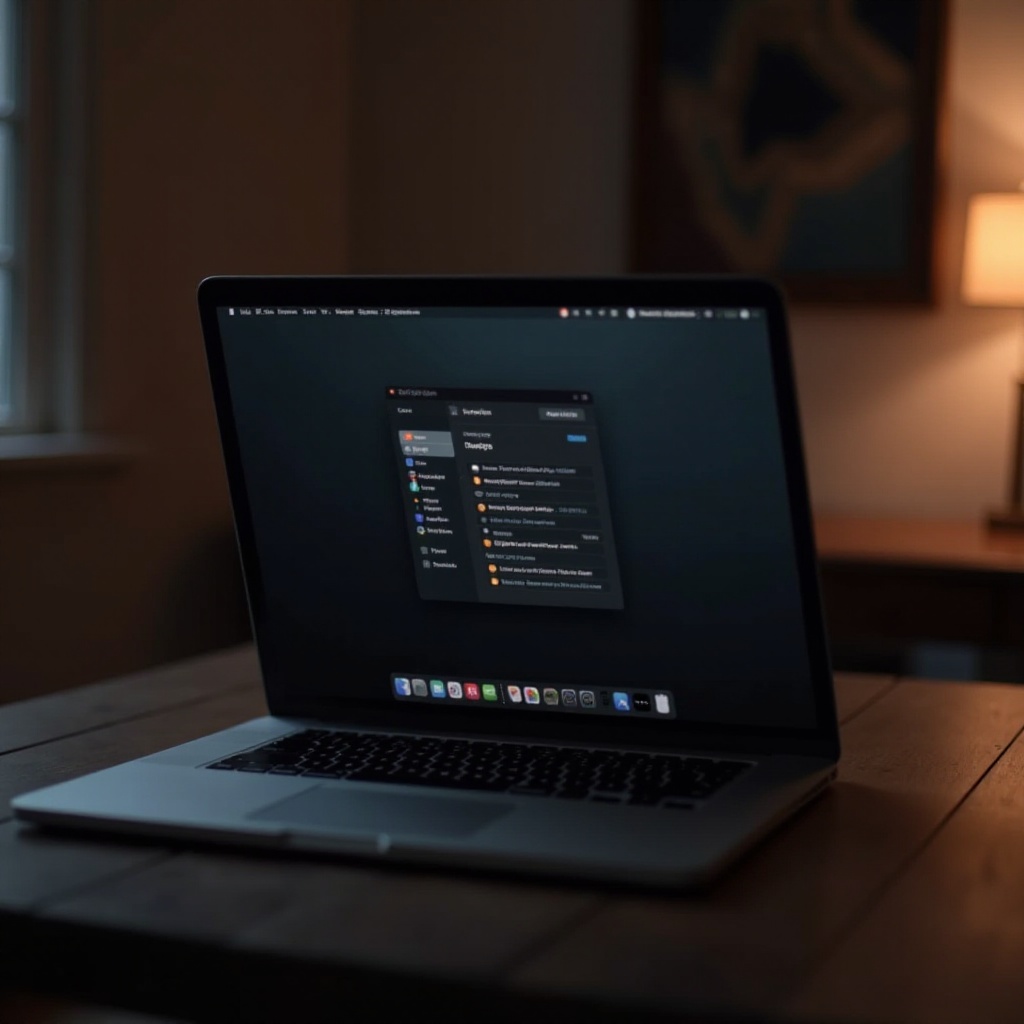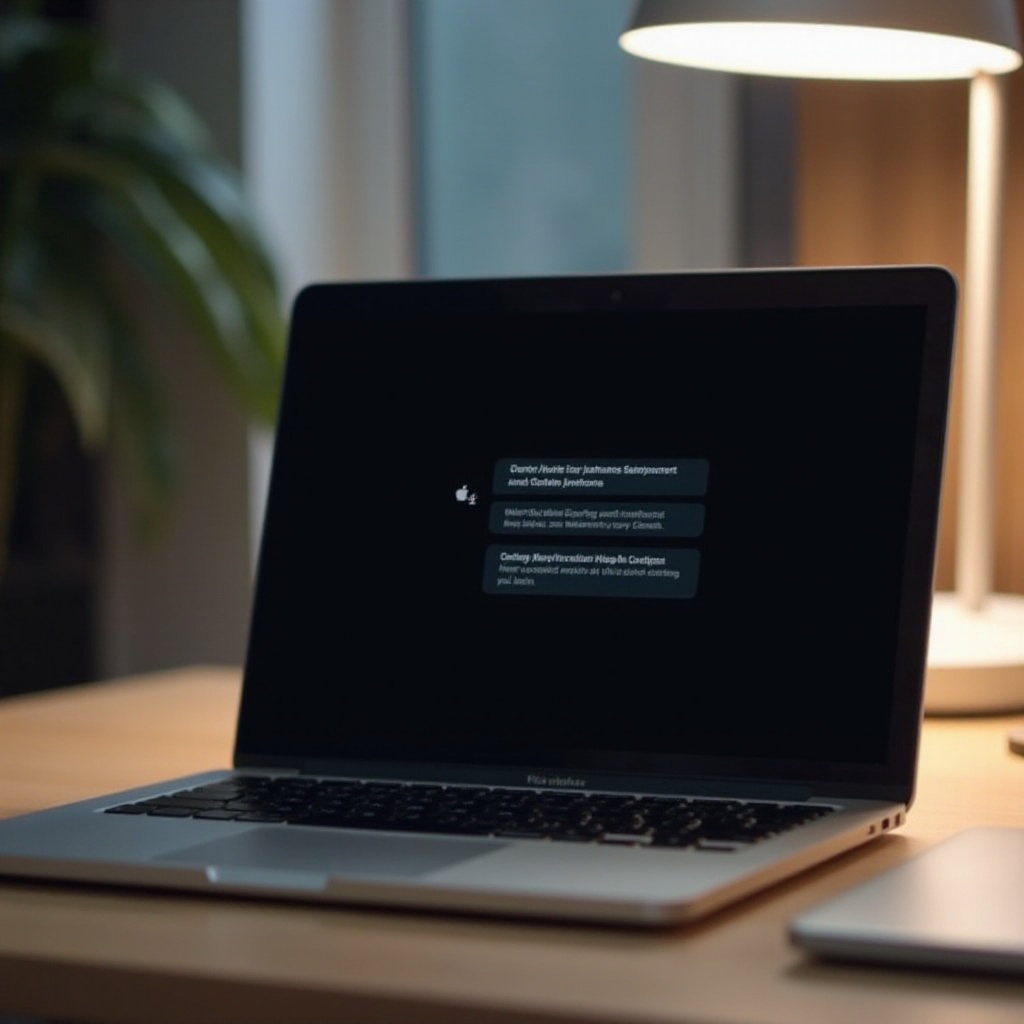Introduction
Changing your MacBook to dark view can be a game-changer. Dark Mode, a popular feature among users, offers a sleek and modern look while reducing eye strain and saving battery life. If you’ve wondered how to activate this feature on your MacBook, you’re in luck. This comprehensive guide will walk you through the steps to enable Dark Mode, customize it, manage other display features, and troubleshoot common issues.
Understanding how to enable Dark Mode on your MacBook and customizing it can make your computing experience pleasant and efficient. Let’s dive right in and explore how you can switch your MacBook to dark view with ease.

What is Dark Mode and Its Benefits?
Dark Mode changes the color scheme of your MacBook interface from bright and white to darker shades. This visual transformation impacts the desktop, built-in apps like Finder and Safari, and even third-party applications that support Dark Mode.
Benefits of Dark Mode:
1. Reduced Eye Strain: The darker interface is gentler on the eyes, especially in low-light conditions, reducing discomfort from screen glare.
2. Improved Focus: Without the distraction of bright colors and high contrast, Dark Mode can enhance your focus on tasks.
3. Battery Efficiency: Darker pixels generally require less power on OLED screens, making Dark Mode potentially useful for saving battery life.
4. Aesthetic Appeal: Many users find Dark Mode visually appealing and modern; it can make your MacBook look sleek and sophisticated.
Now that you know what Dark Mode is and why it’s beneficial, let’s see if your MacBook supports this feature.
System Requirements to Enable Dark Mode on MacBook
Before enabling Dark Mode, you must check if your MacBook meets the system requirements. Dark Mode was introduced in macOS Mojave (10.14). Therefore, your MacBook needs to be running macOS Mojave or any later version.
Here’s how to check your macOS version:
1. Click on the Apple menu in the top-left corner of your screen.
2. Select ‘About This Mac.
3. The Overview tab will show your macOS version.
If your MacBook meets these requirements, you’re ready to enable Dark Mode. If not, consider upgrading your macOS to the latest version compatible with your MacBook.
How to Enable Dark Mode on Your MacBook
Enabling Dark Mode on your MacBook is a straightforward process. Just follow these steps to switch your device to dark view:
- Open System Preferences:
- Click on the Apple menu in the top-left corner.
-
Select ‘System Preferences.
-
Access General Settings:
-
Click on the ‘General’ icon.
-
Select Appearance:
- Under the ‘Appearance’ section, you’ll see three options: Light, Dark, and Auto.
- To enable Dark Mode, select ‘Dark.
- If you prefer your MacBook to switch automatically between Light and Dark modes based on the time of day, select ‘Auto.
Your MacBook should now display Dark Mode. This setting will apply to the system interface and all compatible apps.
Customizing Your Dark Mode Experience
After enabling Dark Mode, you may want to customize the experience further. Here are several ways to make Dark Mode more tailored to your needs:
- Dynamic Desktop Wallpaper:
- Open ‘System Preferences.
- Select ‘Desktop & Screen Saver.
-
Choose a Dynamic Desktop wallpaper that changes appearance according to the time of day, syncing with Dark Mode.
-
Night Shift:
- Open ‘System Preferences.
- Select ‘Displays.
- Click on the ‘Night Shift’ tab.
-
Schedule Night Shift to reduce blue light, which can complement Dark Mode in reducing eye strain.
-
Invert Colors and Increase Contrast:
- Open ‘System Preferences.
- Select ‘Accessibility.
- Under ‘Display,’ you can choose to invert colors or increase contrast for a more customized experience.
Customizing Dark Mode can enhance the visual aesthetics and functionality of your MacBook, making it more suited to your personal preferences.
Managing Dark Mode with Other Display Features
Switching to Dark Mode is part of a holistic approach to managing your display settings for comfort and efficiency. Here’s how you can integrate Dark Mode with other display features:
- True Tone:
- Open ‘System Preferences.
- Select ‘Displays.
-
Enable ‘True Tone’ to adjust your screen’s color temperature based on ambient lighting for a more natural viewing experience.
-
Brightness Adjustment:
- Open ‘System Preferences.
- Select ‘Displays.
-
Use the brightness slider to set a comfortable brightness level that works well with Dark Mode.
-
Reduce Motion:
- Open ‘System Preferences.
- Select ‘Accessibility.
- Under ‘Display,’ enable ‘Reduce Motion’ to minimize screen movement, making interaction with your device less overwhelming.
Integrating these features with Dark Mode will provide a cohesive and comfortable viewing experience.
Troubleshooting Common Issues with Dark Mode
Sometimes, you might face issues while using Dark Mode. Here are a few common problems and their solutions:
- Dark Mode Not Activating:
- Ensure your macOS version is up to date.
- Restart your MacBook.
-
Double-check your Dark Mode settings in ‘System Preferences.
-
Inconsistent Display Colors:
- Disable Night Shift in ‘Displays’ settings and see if it resolves the color inconsistency.
-
Check if you have any third-party apps that might be causing the issue.
-
Some Apps Not Supporting Dark Mode:
- Not all apps support Dark Mode yet. Check for updates for your apps, as developers might have added compatibility in newer versions.
By following these troubleshooting steps, you can overcome common issues and ensure a smooth Dark Mode experience.

Conclusion
Switching your MacBook to Dark Mode can significantly improve your visual experience and reduce eye strain. Whether you’re working late at night or simply prefer a modern, darker interface, enabling and customizing Dark Mode is a simple yet impactful change. By understanding the system requirements, following the activation steps, customizing the settings, and integrating other display features, you can make the most out of Dark Mode. And with the troubleshooting tips, you can resolve any issues that might come your way. Enjoy your rejuvenated, dark-themed MacBook!
Frequently Asked Questions
Does Dark Mode save battery life on MacBook?
Yes, Dark Mode can save battery life, especially on MacBooks with OLED screens, as darker pixels use less power.
Can Dark Mode be scheduled to turn on automatically?
Yes, you can schedule Dark Mode by selecting the ‘Auto’ option in the ‘Appearance’ settings within ‘System Preferences.’
Why does Dark Mode not work with some apps on my MacBook?
Not all apps are yet compatible with Dark Mode. Ensure your apps are updated to the latest version, as developers continuously add support for this feature.